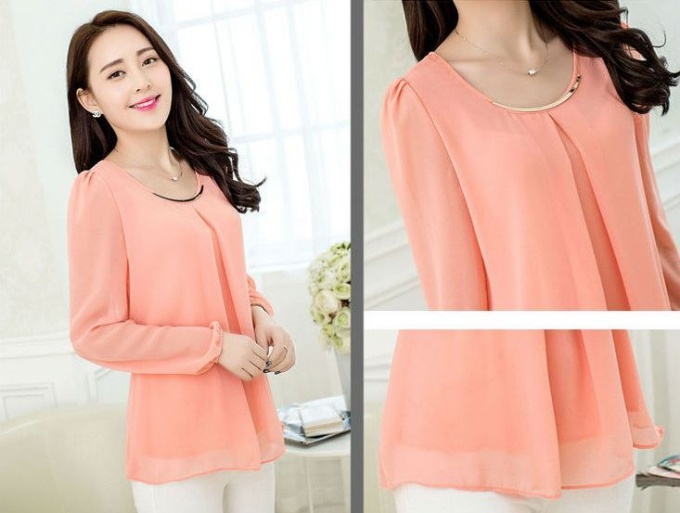Step 1: first taking measurements
If you produce a garment for yourself, ask someone to help you make the right measurements. The fact that to remove, for example, the size of the back will be extremely difficult. Prepare paper and pen; put on thin and not giving additional volume of clothes; stand straight without too much stress. Then using a special tape measure on the clear and record the following measurements:
- the neck girth (OSH) – the horizontal measurement is carried out through the base of the neck;
- the shoulder length (BP) – measurement from a point at the base of the neck to the point of the shoulder joint;
- chest girth (CG) – measurement is carried out horizontally according to the most protruding points of the chest and back;
- the underbust girth (OPG) is a measurement carried out on a horizontal line, passing under the shoulder blades and under the Breasts;
- waist circumference (FROM) – this measure removed the waist line;
- the length to waist (DPT) – measurement from a point at the base of the neck to the waist at the fullest point of the chest;
- length of back to waist line (DSDT) – from the seventh cervical vertebra to the waist line;
- circumference of upper arm (PR) – measure around the arm at the level of armpits;
- the sleeve length (DV) – merc shoot through the elbow from the point of joining the shoulder with the arm to the wrist, slightly bending the elbow;
- the circumference of the wrist (OZ) – measurement around the narrowest place on wrist;
- low hip (ABOUT) – the horizontal measurement at the hip line at the most exposed points, including the stomach.
When taking measurements, try not to pull the measuring tape too tight.
Stage 2: drafting the pattern
To prepare and calculate the pattern the correct model for a novice tailor will not be easy. So as a basis you can use a ready-made pattern from a fashion magazine. Many publications on similar subjects, I attach photos of the products, the sets of patterns in full size. You will need to choose a blouse and transfer pattern on special tracing paper with a pencil or using a copy of the video on a large sheet of paper.
Before transferring the finished pattern, compare your measurements with the data indicated in the special table sizes. These tables are attached to each tab with patterns. Exact match your measurements with the above parameters might not be, but it is not critical. Select the closest to your measurements option and adjust the dimensions of finished patterns according to your standards. Further, using the obtained contours cut out a paper pattern and proceed to cutting the fabric.
Step 3: cutting fabric
Please note – in serious magazines that offer ready-made patterns, and advice on the most suitable texture, fabric and additional accessories. In addition, the finished drawings of the patterns is the direction to the main thread that you want to make cutting. Try to stick to these recommendations is to avoid bias and unwanted artifacts in the ready-made blouse.
Another important point: it is not necessary to cut fabric conventional paper scissors! For these purposes there are special tailoring tool. The so-called tailoring scissors are larger and usually more acute than usual.
Step 4: basting and sewing
Cut part of a future blouse smatyvay large stitches manually or using sewing machine. If the nous is carried out by machine, you must first slightly loosen the thread tension is easy to remove the now unnecessary thread. Identifying and modifying "rough" version of the product, you can proceed to the main sewing blouses.
A tip for those who have no sewing experience, try to learn at least the basics of the technology of tailoring. This process requires compliance with many nuances, without which knowledge is difficult to achieve a positive result.
